How to install htop on CentOS 8
If you want to monitor the system interactively, the htop command should be one of the best choices. htop is an improvement of its predecessor top command. It is an interactive process viewer and system monitor. It marks resource usage indicators with colors and allows you to easily grasp system performance.
It displays information about CPU and RAM utilization, tasks being performed, average load and uptime. In addition, htop displays a list of all running processes, and can also display these processes in a tree format.
The advantages of htop over top include
- Output resource usage statistics in color.
- The ability to terminate or terminate a process without typing its PID.
- Htop allows the use of a mouse, while top does not.
- Better performance than top command.
Now, let's enter to see how to install this convenient feature.
Install htop on CentOS 8
By default, htop is pre-installed on CentOS8. However, if the tool is missing on your system, the installation process is simple and only requires 3 steps.

- The first step in installing the Htop tool is to enable the EPEL repository. To do this, run:
dnf install https://dl.fedoraproject.org/pub/epel/epel-release-latest-8.noarch.rpm
After installing the EPEL repository, please update the system.
# dnf update
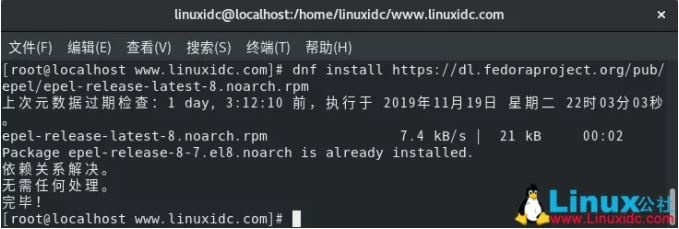
- To install the htop tool, just run the following command:
# dnf install htop
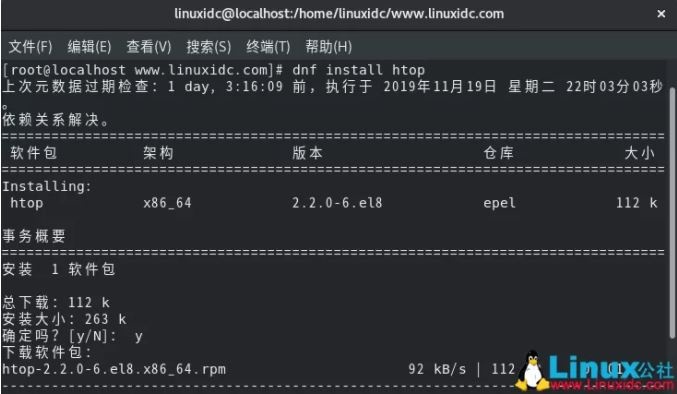
After the installation is complete, you can find more information about htop by running the command.
# dnf info htop
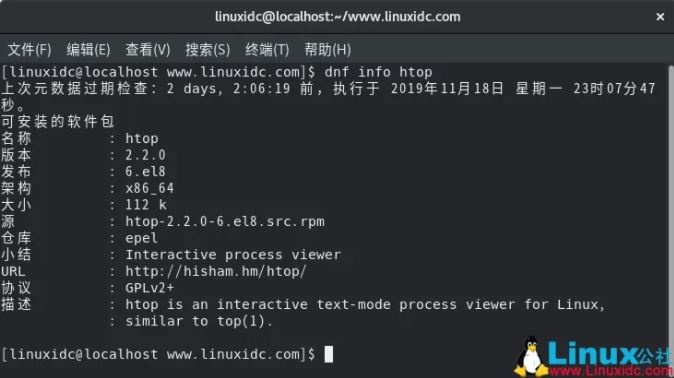
- To start htop, just run the command.
# htop
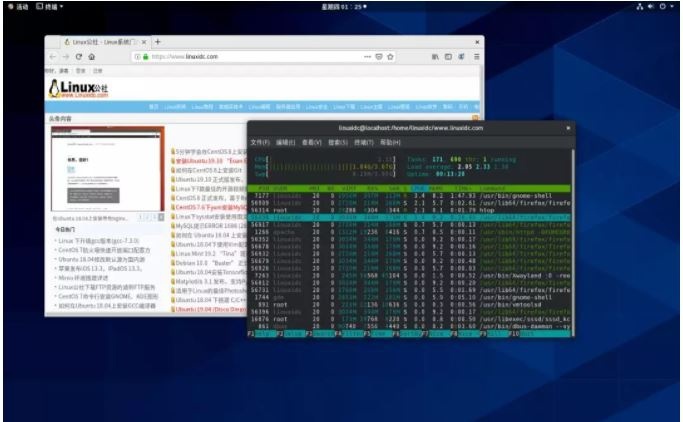
From top to bottom, the left part is the usage of cpu, memory, and swap partition. The right part is: Tasks is the total number of processes, the number of processes currently running, and Load average is the average load of the system for 1 minute, 5 minutes, and 10 minutes. Situation, Uptime is the time when the system is running.

The above items are:
- PID: the identification number of the process
- USER: the user running this process
- PRI: the priority of the process
- NI: The priority value of the process, the default is 0, which can be adjusted
- VIRT: virtual memory value occupied by the process
- RES: physical memory value occupied by the process
- SHR: Shared memory value occupied by the process
- S: The running status of the process, R means running, S means dormant, waiting to wake up, Z means dead state
- %CPU: CPU usage occupied by the process
- %MEM: the percentage of physical memory and total memory occupied by the process
- TIME+: The total CPU time occupied after the process started
- COMMAND: The name of the startup command for process startup
In addition, you can pass some parameters to the command. For example, list the user's processes. Suppose linuxidc runs the command.
# htop -u linuxidc
To get help on command usage, just run it.
# htop --help
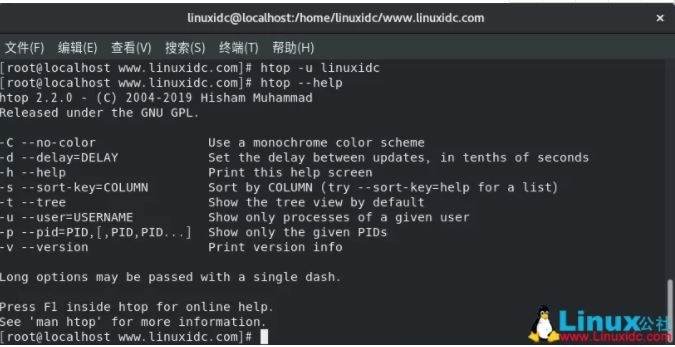
Alternatively, you can view the man page by running the following command:
# man htop
to sum up
In this article, you learned how to install htop on CentOS 8 and how to use this command to retrieve system statistics.
The above is the tutorial for installing htop on CentOS 8 introduced by the editor. I hope it will be helpful to you. If you have any questions, please leave me a message. The editor will reply to you in time. Thank you very much for your support to the ZaLou.Cn website!
If you think this article is helpful to you, welcome to reprint, please indicate the source, thank you!
Recommended Posts